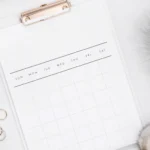Write Your First Blog Post is a crucial step in building a successful blog. Whether you’re launching a personal blog, a business site, or a niche platform, crafting the perfect first post is essential for establishing your presence.
This guide will walk you through the essential steps to ensure your first blog post resonates with your audience, attracts search engine traffic, and sets a strong foundation for future content.
From choosing the right topic and optimizing for SEO to creating a compelling introduction and conclusion, we’ll cover all the strategies you need to write a post that engages readers and drives results.
Let’s dive into the process of writing your first blog post that leaves a lasting impression.
Why Your First Blog Post Matters
Your first blog post is your virtual handshake with your readers. It’s your opportunity to make a memorable first impression, showcase your tone and expertise, and encourage readers to return for more.
Here’s why your first post holds so much weight:
- It sets your tone and style.
- It shows what value your blog will offer.
- It builds trust and engagement from the start.
- It boosts your SEO foundation.
Step 1: Understand Your Audience
Before writing a single word, identify your target audience. Knowing who you’re writing for helps shape your tone, content, and structure.
Questions to Ask:
- Who are your ideal readers?
- What problems are they trying to solve?
- What language or tone do they relate to?
- What type of content do they consume?
Example:
If you’re launching a fitness blog, your readers might be beginners wanting simple at-home workout tips. Writing in a supportive, motivational tone would resonate better than using advanced jargon.
ALSO READ: How to Choose a User-Friendly Laptop?
Step 2: Choose the Right Topic

Your first post should be highly relevant and useful to your audience. It should either introduce your blog or provide immediate value with tips, how-tos, or solutions.
Popular First Post Ideas:
| Blog Niche | First Post Idea |
|---|---|
| Health & Wellness | “Why I Started My Health Journey (and How You Can Too)” |
| Tech & Gadgets | “Top 5 Tools I Can’t Live Without as a Developer” |
| Fashion | “How to Build a Capsule Wardrobe on a Budget” |
| Business & Finance | “10 Productivity Hacks That Changed My Business” |
| Parenting | “My First Year as a Parent: What I Learned” |
Choose a specific, actionable topic over a vague or general one.
Step 3: Do Keyword Research
For your blog to be discoverable on search engines, SEO keyword research is essential.
How to Find Keywords:
- Use tools like Google Keyword Planner, Ubersuggest, or Ahrefs.
- Look for low-competition, long-tail keywords.
- Incorporate your primary keyword naturally in your title, headers, meta description, and throughout the content.
Example:
If you’re writing about budgeting tips, a good keyword might be: “budgeting tips for young adults”.
Step 4: Create a Compelling Blog Post Title
Your title should be clear, keyword-rich, and enticing. Aim to spark curiosity while explaining what the reader will gain.
Tips for a Great Title:
- Use numbers: “7 Steps to…”
- Use power words: “Ultimate,” “Beginner’s Guide,” “Easy,” “Proven”
- Address a problem or question.
Examples:
- How to Start Meal Planning for Busy Families
- The Beginner’s Guide to Investing in Your 20s
- 5 Simple Ways to Reduce Daily Stress
Step 5: Write an Attention-Grabbing Introduction
Your introduction should hook the reader within the first few lines. Clearly state what the post is about, who it’s for, and why it matters.
Sample Intro Structure:
- Start with a relatable problem or story.
- State what the reader will learn.
- Tease a solution or benefit.
Example:
“Struggling to stay productive while working from home? You’re not alone. In this post, I’ll share five simple strategies that have doubled my daily output.”
Step 6: Structure Your Content with Headings and Subheadings
Formatting is key to readability and SEO. Use H2 for main sections and H3 for sub-sections. Keep paragraphs short (2–4 lines), and use bullet points, lists, and tables to break up the text.
Ideal Blog Post Structure:
| Section | Purpose |
|---|---|
| Title | Draws interest and includes keyword |
| Introduction | Hooks the reader and previews the post |
| Main Content | Delivers value with headings, tips, and examples |
| Conclusion | Summarizes key points and includes a call to action |
| Call to Action (CTA) | Encourages the next step—subscribe, comment, or share |
Step 7: Write with Clarity and Personality

Your voice makes your blog unique. Write as if you’re talking to a friend. Use active voice, short sentences, and relatable examples.
Writing Tips:
- Avoid jargon or explain it clearly.
- Use analogies and stories.
- Edit for clarity and flow.
- Aim for a 6th–8th grade reading level.
Example Comparison:
❌ “Utilize multifaceted methodologies to enhance productivity.”
✅ “Try simple techniques that make you more productive.”
ALSO READ: How to Start a Home Decluttering Project: A Complete Guide for Beginners
Step 8: Add Visuals and Media
Images, infographics, charts, and even videos make your post more engaging and easier to understand.
Types of Visuals to Include:
- Stock images or personal photos
- Infographics summarizing data
- Step-by-step screenshots
- Short explainer videos
Pro Tip:
Name your image files with SEO-friendly keywords and always use alt text for accessibility and search engines.
Step 9: Include Internal and External Links
Link to other relevant content on your blog (internal linking) and trusted external sources to boost credibility and SEO.
Example:
- Internal link: “Check out my guide on creating a blog content calendar.”
- External link: “According to a report by HubSpot, blogs that post regularly generate 55% more traffic.”
Step 10: End with a Strong Conclusion and Call to Action
Your conclusion should briefly recap the key points and prompt the reader to take the next step.
Sample CTA Ideas:
- “If you found this helpful, subscribe to get my next post!”
- “Comment below and tell me your biggest challenge with starting a blog.”
- “Download my free checklist for writing better blog posts.”
Common Mistakes to Avoid
| Mistake | Why It Hurts |
|---|---|
| Writing without a target audience | Makes the post unfocused and unrelatable |
| Ignoring SEO | Limits your visibility in search engines |
| Long, unbroken paragraphs | Discourages readers from continuing |
| No CTA or engagement element | Missed opportunity to build your audience |
| Too salesy or promotional | Reduces trust, especially in the first post |
Additional Topics to Enhance Your First Blog Post

As you expand your blogging strategy, consider touching on the following areas in your first few posts:
About Me/Why I Started This Blog
This humanizes your brand and connects you with readers on a personal level.
What to Expect from This Blog
Outline your posting schedule, topic categories, and what kind of content readers can look forward to.
Resources or Tools You Recommend
Introduce readers to helpful tools or apps you personally use. This also gives you a chance to add affiliate links later.
Behind-the-Scenes Setup
A post on how you built your blog—from choosing a domain to setting up WordPress—can help others in the same boat.
Bonus: Blog Post Checklist Before Publishing
Use this final checklist before you hit “Publish” to ensure quality and readiness.
| Checklist Item | Status |
|---|---|
| Clear, keyword-optimized title | ✅ |
| Target audience identified | ✅ |
| Compelling introduction | ✅ |
| Structured with H2 and H3 tags | ✅ |
| SEO-friendly keyword use | ✅ |
| Internal and external links | ✅ |
| Visuals with alt text | ✅ |
| Proofread for grammar/spelling | ✅ |
| Call to action included | ✅ |
| Mobile responsive format | ✅ |
ALSO READ: How to Practice Mindful Eating Daily?
Conclusion
Your first blog post doesn’t have to be perfect—it just needs to be authentic, helpful, and reader-focused.
As you continue blogging, your voice will evolve, your writing will improve, and your audience will grow.
By following this guide, you’re not only launching your blog—you’re laying a strong foundation for content that connects, ranks, and converts.







